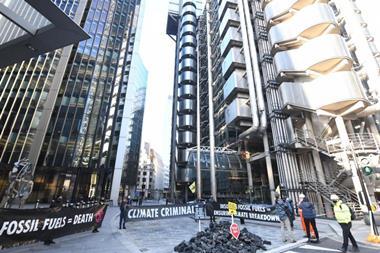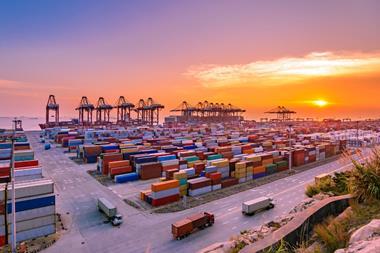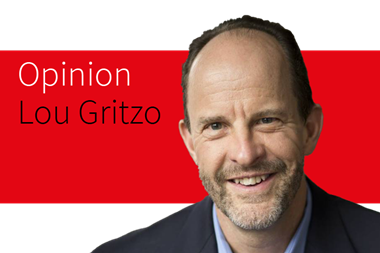Publicly-listed firms will be compelled to report on third party climate risks as well as their own
As the world emerges from the global pandemic, climate change is once again taking centre stage with the US Securities and Exchange Commission (SEC) proposing new rules to enhance and standardise climate disclosures.
Upon adoption, public companies would be required to disclose climate-related risks that could impact the organisation.
With the increased attention from stakeholders - investors, boards, customers, partners, and employees – along with these impending climate disclosure requirements, companies need the ability to access a current understanding of their risk exposure.
Keeping in mind that their biggest climate exposure could be hidden in their supply chains, companies need the ability to understand and report on their third- parties’ climate risks as well as their own.
New Regulations and the supply chain
The SEC’s proposed rule requires registrants to include certain climate disclosures in their registration statements and periodic reports.
The requirements are for climate-related risks that are likely to materially impact business, results of operation, or financial condition. They go beyond the organisation’s four walls.
According to McKinsey, the average company’s supply chain creates a greater environmental impact than its own operations.
In fact, the supply chain accounts for more than 80% of greenhouse gas (GHG) emissions and more than 90% of the impact on geological resources. This is problematic, as the SEC’s proposed rule would require disclosed GHG emissions data (Scope 3) from upstream and downstream activities in a company’s value chain.
While these disclosure requirements would apply to public companies, private companies should also expect to provide decision-useful information on climate-related risks as their stakeholders will soon demand it.
The issue here is that more than half of companies lack end-to-end visibility in their supply chains. In fact, 85% of company executives do not feel their current capabilities allow them to deliver the traceability needed to remain resilient and sustainable.
The time to act is now to address these blind spots before the requirements go into effect or conversely the market uncovers unexpected climate issues. Institutional investors who fail to address climate change risks can expect to reduce the value of their portfolios by as much as 10% in the next 20 years.
The concern goes beyond investors as customers and employees alike are prioritising sustainability when making purchasing and career decisions.
To navigate the complex risk landscape, incoming mandates, and related reputation risks, businesses should upgrade their approach to third-party risk management with continuous and comprehensive monitoring of climate-related risks.
ESG calls for continuous risk monitoring
Many companies are currently tracking third-party environmental, social and governance (ESG) risks with lengthy and time-consuming questionnaires. The problem is that climate risk is not static.
Any data collected at a point-in-time quickly becomes stale and can’t keep up with risk’s dynamic nature. This outdated approach forces companies to be reactive. By the time a company learns of a supplier risk event, it’s too late to effectively mitigate the impact.
For companies with hundreds of third, fourth, and Nth-tier parties, it’s too easy for ESG risks to slip under the radar.
The only way to effectively mitigate ESG risks is proactively with continuous risk monitoring for 24/7 visibility. Businesses need an up-to-date risk picture of their entire landscape, from suppliers next door to Nth parties across the world.
While it’s not efficient or effective to rely on humans for this visibility, teams can leverage today’s automation, AI, and machine learning to do more with less and access real-time intelligence on ESG-related events and metrics as well as changes in regulations, policies, standards, trends, and more.
When businesses leverage continuous monitoring, they benefit from early warnings of trouble that enable effective proactive mitigation before the risk indicator snowballs into a major reputation risk with financial or operational impact.
It’s also important to expand the risk aperture. Companies need to monitor a comprehensive, international standards-based ESG risk framework – that goes beyond climate-related risks – to include a broad taxonomy of ESG risks such as equality, diversity, and inclusion and location-specific ESG factors.
With the current administration’s attention to these matters, it won’t be long before disclosure around other ESG-related risks are expected or even mandatory.
Thriving under the new SEC rules
Prioritising climate is not only good for the world – it’s good for business. Good ESG stewardship means greater investment, talent attraction and retention – and greener supply chains mean more profit.
In fact, more than 50% of large businesses and 25% of their suppliers have seen cost savings as a result of their carbon management activities, according to CDP.
The SEC’s proposed rules will hold businesses and their supply chains accountable and provide stakeholders with decision-useful information on climate risks.
There’s potential to be capitalised on here – and major risk to be avoided. The most successful leaders will quickly upgrade their risk management approach and be fully prepared for climate and other ESG disclosures on the near horizon.
Atul Vashistha is a leading expert on supply chain risk and global business services. He is founder and chair of Supply Wisdom.




















No comments yet